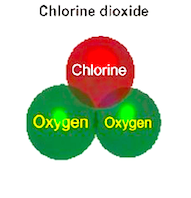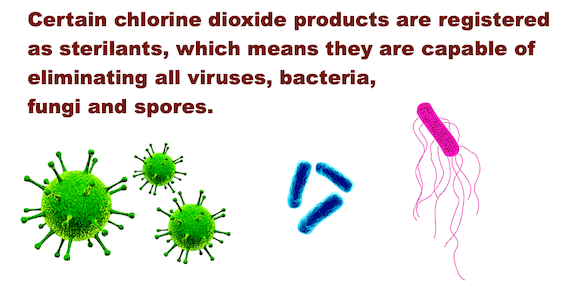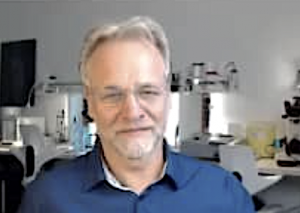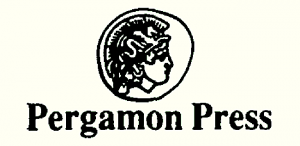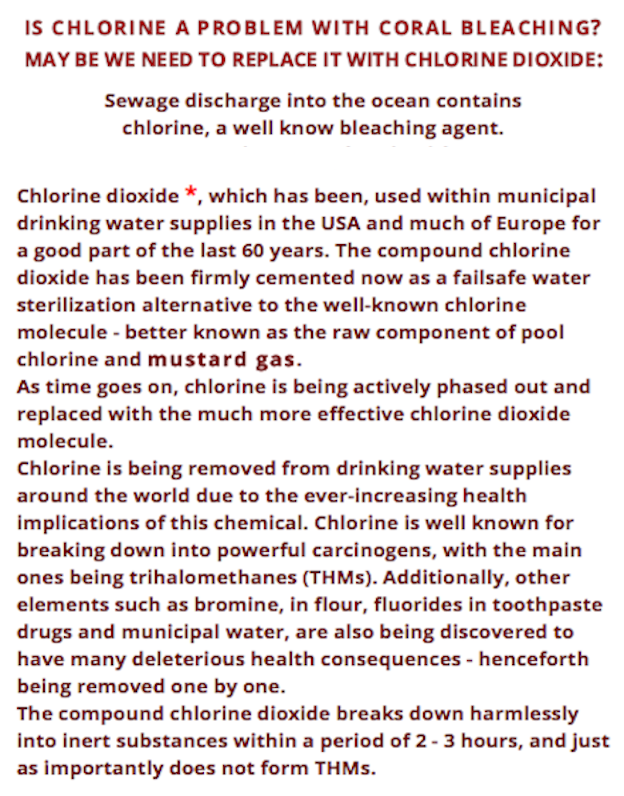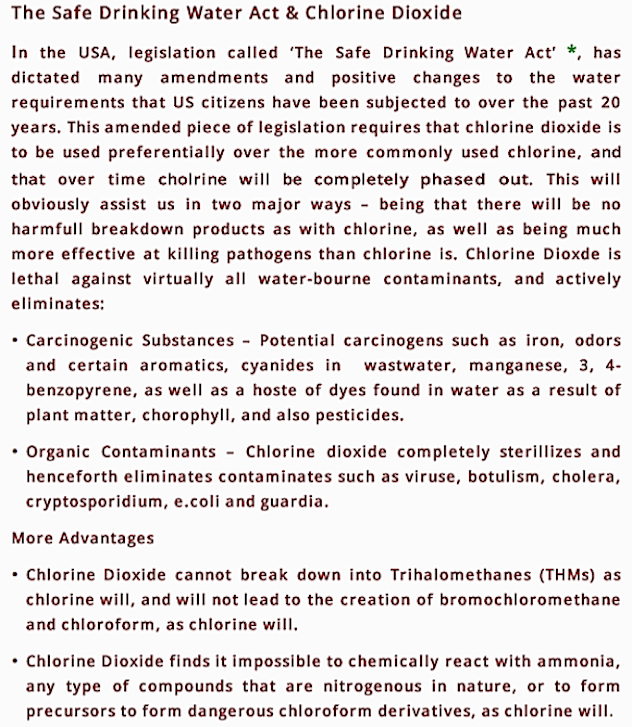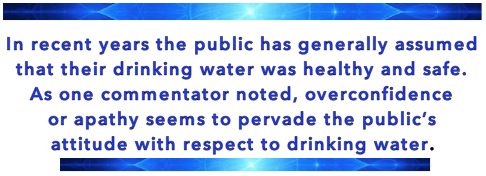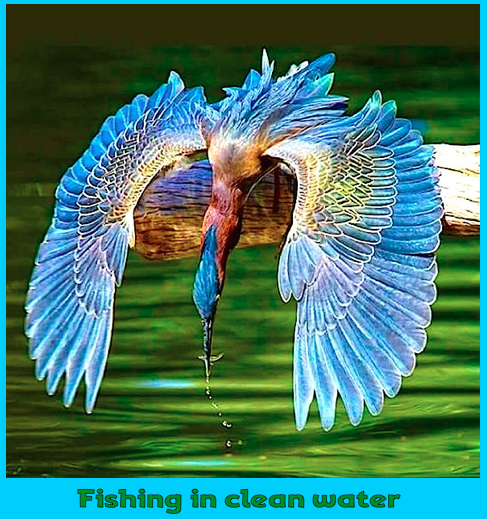⇒ New Link ⇐
-=-=-=-=-=-=-=-=-=-=-=-=-=-=-=-=-=-=-=-=-=-=-=-=-=-=-=-=-=-=-=-
Chlorine dioxide (ClO2) is a disinfectant which possesses high
efficiency, low toxicity, fast, and broad sterilization ability.
-=-=-=-=-=-=-=-=-=-=-=-=-=-=-=-=-=-=-=-=-=-=-=-=-=-=-=-
Chlorine dioxide destroys biofilm, the algal slime that
collects in cooling towers, among other places
and harbours the harmful bacteria
(Legionnaires’ disease).
-=-=-=-=-=-=-=-=-=-=-=-=-=-=-=-=-=-=-=-
Chlorine by contrast does NOT kill biofilm.
Chlorine by contrast does NOT kill biofilm.
Chlorine by contrast does NOT kill biofilm.
-=-=-=-=-=-=-=-=-=-=-=-=-=-=-=-=-=-
Chlorine dioxide gas does NOT deplete
the ozone layer as chlorine gas does.
-=-=-=-=-=-=-=-=-=-=-=-=-=-
At the time of writing, no cases of hospital-acquired
Legionnaires disease have been detected at the hospital
since the chlorine dioxide system was installed in January 2003.
Use of chlorine dioxide was safe, based on Environmental
Protection Agency limits regarding maximum
concentrations of chlorine dioxide and chlorite…
Full original text → HERE
Myths & misconceptions chlorine dioxide
1984 – China
Disinfection-Chlorine dioxide-viruses-algae-animal-planktons-water
-=-=-=-=-=-=-=-=-=-=-=-=-=-
Understanding MMS
http://quantumleap.is/
-=-=-=-=-=-=-=-=-=-
The world’s oceans contains on average ~0.5 mol/L chloride,
~0.03 mol/L fluoride and 0.001mol/L bromide.


